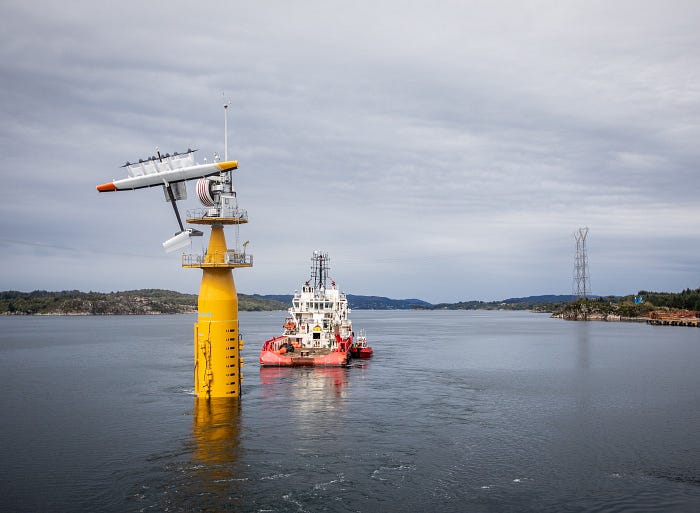Learn
Editor’s note: This blog was originally published on the Makani team blog by Dr. Fort Felker on August 15, 2019. In 2020 Makani’s 13-year journey came to an end. You can explore Makani’s 13 years of technical development and insights in The Energy Kite Collection. Thank you to everyone who supported the Makani team on their journey.
Last week, Makani’s energy kite flew over the North Sea. With demand for renewable energy on the rise, Makani’s first offshore flights could signify a breakthrough for floating offshore wind. Once commercialized, Makani’s kites have the potential to bring power to hundreds of millions of people living along the world’s coastlines where the wind is strong and steady, but the water is too deep to fix wind turbines to the ocean floor.
Makani’s successful autonomous flight from a floating platform demonstrates that this new offshore wind power technology works. We also verified the capability of our simulation tools, confirming that we can use our models to develop system changes as we increase our commercial readiness. But before we could test our models in the real world, we had to achieve several technical milestones while still in port: we integrated our base station with a floating platform, marinized our hardware, and extended our autonomous flight controls system to handle flight from a moving base station — a problem that’s a little like trying to parallel park a car with the curb shifting forward, backward, up and down. Our partners at Shell shared their significant offshore operational expertise, so that the Makani team could stay focused on solving problems unique to transitioning our airborne wind power system offshore.
To demonstrate our offshore flight capability, we completed two flights from the floating platform. The first quick flight included launch, hover away from the perch, and an autonomous landing. The second, longer-duration test, demonstrated robust crosswind flight. The kite flew beautifully, accurately following commands from the flight controller, and affirming that its motion and that of the floating platform matched our pre-test simulations. In preparation for landing, the kite smoothly transitioned out of crosswind into a stable hover. However, it did not successfully land on the platform, and the flight ended with the loss of the energy kite. Both offshore flights gave us a wealth of new information that the team is now busy analyzing and applying to making system improvements.
Makani’s transition offshore introduces new technology that once commercialized can economically access stranded wind resources at sea. The low mass of our kite and our correspondingly-low materials and installation costs make it possible for Makani’s airborne wind power system to take advantage of existing infrastructure and supply chains. This means energy kites can be deployed from small and medium-sized ports around the globe, without the need for specialized vessels or massive cranes. For this recent demonstration at METCENTRE in Norway, we transported our airframe on a flatbed trailer, used a commonly available mobile boom crane to lift the kite onto its perch, and in one smooth operation using two coastal tug boats we installed the kite and spar offshore at a water depth of 220m.

Makani’s airborne wind power system is easy to transport and install offshore from small and medium-sized ports using commonly available vessels.
Our first offshore flight drew from Makani’s mantra of simplicity, the maturity of our onshore flight testing, and Shell’s offshore experience. Next steps include additional flights onshore in Hawai’i and offshore in Norway with a focus on flying in a range of environmental conditions, perfecting our landings at sea, and refining our remote operations. We will work with Shell to optimize our floating platform and mooring system, minimize the need for personnel to access the kite at sea before or after flight, and connect to the grid. As we move closer to commercialization, we’re seeking additional partners to catalyze our growth and we’re excited to be facing a vast oceanscape of opportunity to bring affordable floating offshore wind power to people around the globe.